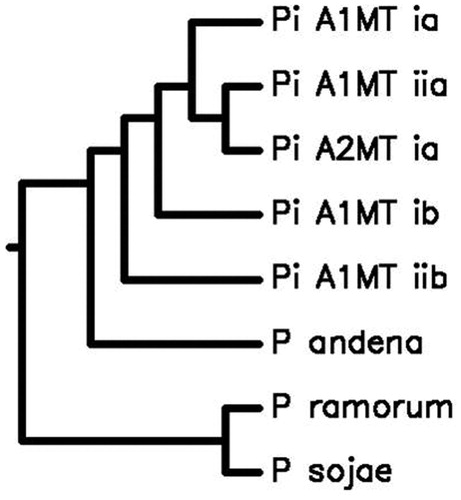Figures & data
Figure 1. The phylogenetic tree depicting Genome-wide comparative studies of A2 MT with A1 MTs, P. ramorum, P. sojae and P. andina using Average Nucleotide Identity http://enve-omics.ce.gatech.edu/ani/. P. infestans A1 MT has 99.5%, 94.2%, 99.4%, and 94.3% sequence similarity with Ia (Acc. No. AY894835), IIa (Acc. No. AY898627), Ib (Acc. No. NC002387), and IIb (Acc. No. AY898628), respectively, and 98.3%, 71.5%, and 67.5% sequence similarity with P. andina (Acc. No. NC015619), P. ramorum (Acc. No. NC009384), and P. sojae (Acc. No. NC009385), respectively. Several nuclear and mitochondrial gene studies have shown that P. andina is an hybrid, with P. infestans as one of the parents (Kroon et al. Citation2004; Gómez-Alpizar et al. Citation2008; Haas et al. Citation2009; Goss et al. Citation2011; Blair et al. Citation2012; Lassiter et al. Citation2015) and our results strongly support the same at whole-genome level.

